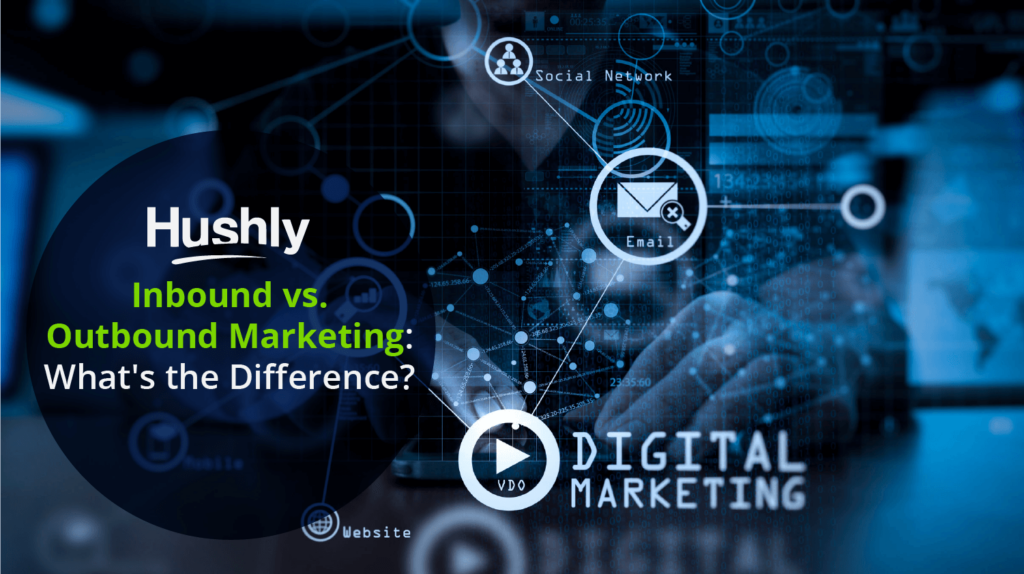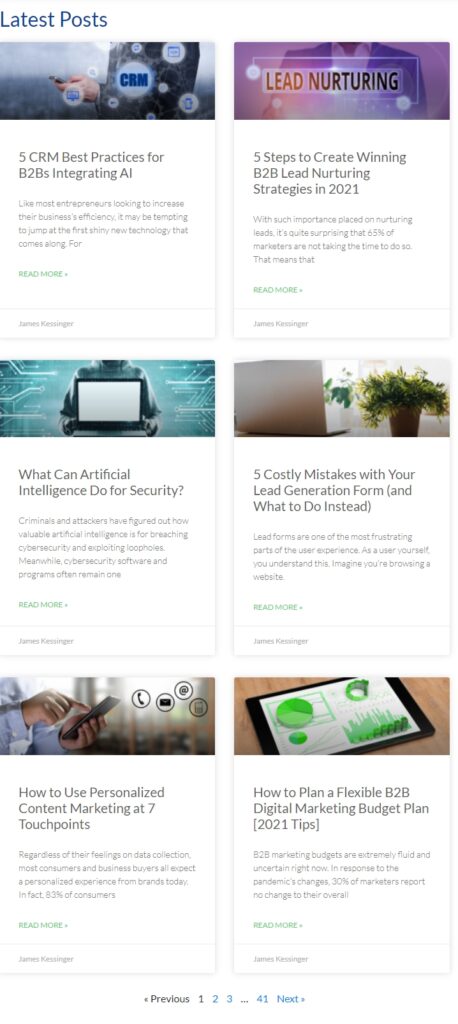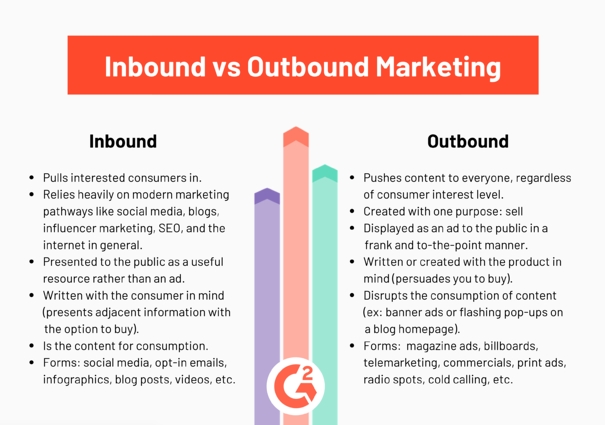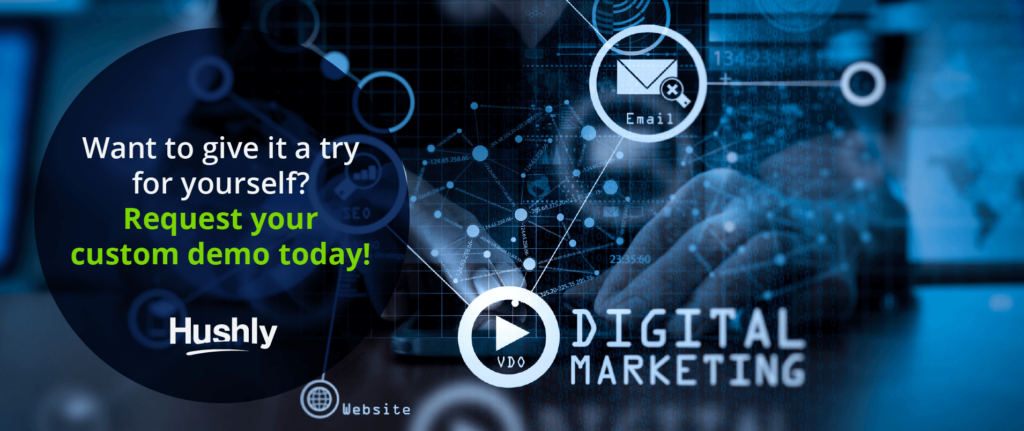Filters
Content Type
Topic
Inbound vs. Outbound Marketing: What’s the Difference?

In B2B marketing, lead generation is of top priority. However, statistics show that 61% of marketers say generating leads is one of their biggest challenges. This is why there is a lot of discussion about inbound vs. outbound marketing.
Yes, they are both essential in creating a successful B2B marketing strategy. Unfortunately, many marketing teams still don't understand how truly unique each approach is.

Inbound vs. Outbound Marketing: Here's What You Need to Know
Whether you are starting your marketing strategy from scratch or you are in the process of revising your current strategy, it's vital that you understand the difference between inbound and outbound marketing.
Inbound Marketing
Inbound marketing is a way of reaching out to your prospects that is characterized by attracting, engaging, and educating them. This is done through various methods, including content marketing, social media, and search engine optimization (SEO).
This method is the primary marketing approach for nearly 74% of marketers worldwide, with that number increasing when you break down by location. For instance, 79% of marketing professionals say inbound marketing is their primary approach to marketing in the US.
Inbound marketing is a long-term approach that requires patience. It focuses on the needs of your prospects, so you can create content that is useful and valuable to them.
Inbound Marketing Examples in Action
Inbound marketing is the primary marketing strategy globally because there are dozens of ways to implement it into your strategy. Some of the best ways to use inbound marketing include:
- Social Media – Social media is an excellent way to build relationships with your prospects. By creating and then sharing content that resonates with your target audience, you can gain their trust and interest. This will put your brand in front of them, which will increase the likelihood of them buying from you.
- Search Engine Optimization (SEO) – SEO is one of the biggest components of inbound marketing. By optimizing your website, blog, and other online assets, you can improve the search engine rankings of your content. This will increase the amount of traffic you get to your website, which will help you reach new leads.
- Blogging – This tactic is the cornerstone of inbound marketing because it's all about creating valuable, informative content. By creating an easy-to-read blog that is relevant to your target audience, you can attract new leads and build your credibility.

Outbound Marketing
While inbound marketing focuses on attracting and engaging your target audience, outbound marketing is a strategy used to reach out to your prospects.
With outbound marketing, you are actively trying to reach out to your prospects through various methods. This includes cold calling, email marketing, direct mail, and digital advertising.
Outbound marketing is a more aggressive approach to reaching out to your prospects. This method is used at the top of the marketing funnel because it focuses on generating awareness. It is used to generate interest in your product or service before you can even begin to educate your prospects.
Common Examples of Outbound Marketing
The best way to understand outbound marketing is to see it in action. There are a variety of ways to implement outbound marketing into your strategy. Some of the most popular methods include:
- Cold Calling – This is one of the oldest and most traditional forms of outbound marketing. It involves calling a prospect, without any prior contact, in the hopes of getting them to agree to a meeting or phone call. While cold calling often gets a bad reputation, it's more effective than you may think, with studies showing that 69% of buyers have accepted a call from a new salesperson within the past 12 months, and 77% of sellers saying that phone calls to a new contact are "extremely" effective.
- Cold Email Messaging – This is a newer form of outbound marketing. While it's similar to cold calling, it allows you to send an email to a prospect and then leave it up to them to decide whether or not they want to reply. This is an excellent approach to use when you don't have much information on a prospect. Cold email marketing is often given a bad reputation, too. Although, some studies have shown that a properly personalized cold email can have an open rate of 47%, with an average reply rate of 9%.
- Direct Mail – Direct mail is another commonly utilized outbound marketing method. It involves sending a piece of direct mail to your prospects, such as a postcard or letter. This is a great method to use when you have a physical address for your prospect. It's also an excellent option for B2B marketing because it allows you to include a personalized message, along with a business card. While most marketers will tell you that direct mail is dead and tend to favor inbound methods, studies show that direct mail offers a 29% return on investment. It's also a preferred method of contact amongst 73% of Americans who state that they enjoy reading the mail whenever they want.
- Digital Advertising – Digital advertising is one of the most used forms of outbound marketing. This includes everything from social media ads, to retargeting ads. Digital advertising is a powerful tool that gives you the ability to target your prospects based on their specific needs.

Inbound vs. Outbound Marketing: Benefits of Each
Now that you have a better understanding of inbound and outbound marketing, it's time to look at the benefits of each.
Benefits of outbound marketing:
- Cost-effective
- Easy to implement
- Quick to start generating results
Benefits of inbound marketing:
- Easy to track leads
- Creates a better, more seamless customer experience
- Builds credibility
Optimize Your Lead Generation Forms with Hushly
With the right strategy, inbound and outbound marketing are equally effective. They both require a lot of hard work and dedication but can deliver tremendous results.
The most important thing to remember is that each form of marketing has its own benefits. It's up to you to decide which approach will work best for your brand. Once you have decided on a direction, you can start implementing your strategy.
Once you have, you need to make sure you have a place to send your prospects so you can collect their information. This is where a lead generation form builder can come in handy. Lead generation forms are used to collect information from your prospects, which can be vital for your B2B marketing strategy.
Here at Hushly, we have created a lead generation form builder that is easy to use and can be customized to fit your brand. This form builder is the perfect way to collect information from your prospects so that you can nurture them and convert them into leads.
Want to give it a try for yourself? Request your custom demo today!
The post Inbound vs. Outbound Marketing: What’s the Difference? appeared first on Hushly.



